
How We Integrate the IB and Ontario Curriculum
Thinkers
We encourage deep thinking about analyzing our character.
Risk- Takers
We teach students how to make big choices on-stage which translates to brave big choices off-stage as well.
Principled
Each start of our rehearsal process begins with the reminders of our key principles: respect, open-mindedness, and communication, which are the foundation of our program. We also focus on team work and helping others in all situations. Principles like compassion, empathy and kindness are reinforced weekly.
Inquirers
We encourage each of our students to use their critical thinking skills to analyze characters, plots, intention, and see these key concepts are present in their day-to-day lives.
Caring
We see each cast member as a part of the Silver Canvas team and we teach all of our students that we care about each of them, no matter the size of their part. We honour difference and celebrate diversity.
Open- Minded
Silver Canvas teaches that anyone can play any part. We stretch our ideas about what the play is about. As well as, being directed by the director will help build the open minded skills. Taking direction is a life skill.
Open- Minded
Silver Canvas teaches that anyone can play any part. We stretch our ideas about what the play is about. As well as, being directed by the director will help build the open minded skills. Taking direction is a life skill.
Balanced
In our training we teach how our body is our instrument and we must take care of it. We need to balance our activity with rest. As well as, eating a balanced diet to keep our instrument healthy.
Reflective
We pride ourselves on teaching new skills but solidifying this learning by letting each student take an active part in analyzing their role. We look at what is working in their character building and what areas need to shift to support their character work.
CAMP CURRICULUM EXAMPLES
MORNING
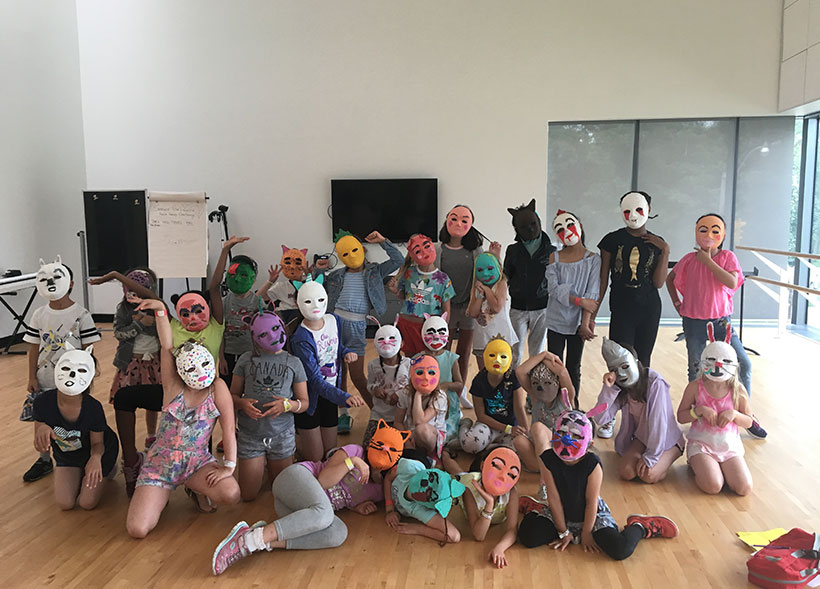
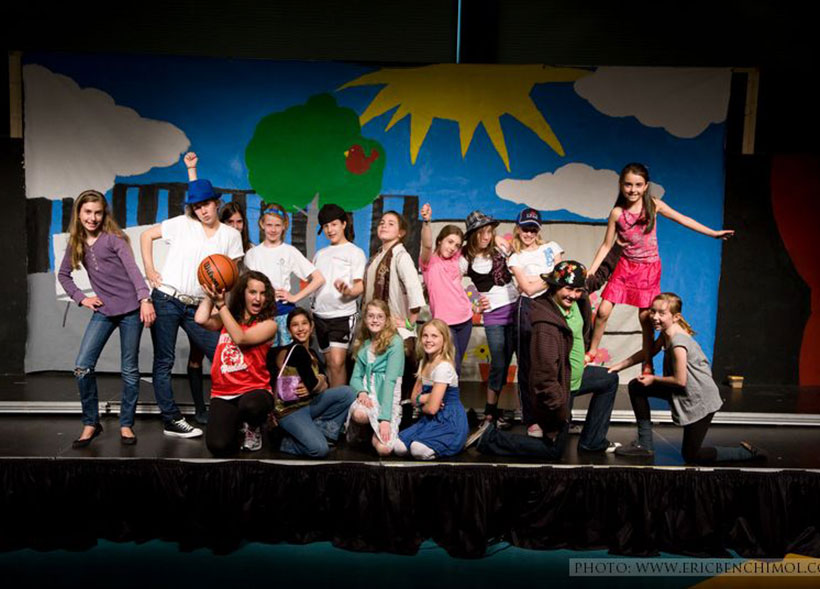
- Opening Warm up Circle: We talked about what Theatre means to them. We warmed our bodies up and focused on health and well being. We spoke about taking care of our bodies and warming them up. Artists use their bodies as their instruments. We must protect them.
- We believe in building relationships in order to build a team. This means it is important to learn about each other. We interviewed our partners and learned three things about them and shared it with the class.
- We said hello in a language we know or the language we speak at home and created an action everyone repeated. This game works on three skills of memorization, focus on detail and creation.
- We spoke about the “promises” or rules regarding respect and creating a safe space for all campers to be able to take risks and grow.The campers came up with a fantastic list of Promises:A) Be Inclusive (they used this word! I was so impressed)
B) Be kind and open minded
C) Safe Choices – creating a safe space
D) Have Fun
E) Listen to others
F) Respect for self, others and space
G)Encourage Others - Introduction/Trust Games: These games are designed to help the campers get to know on another and become comfortable working in the space.
- Game called Atom – Become: A washing machine, A house, A car – together they have to work together on designing this with their bodies
- Developing a Cheer and Name – this unit is designed to help build literacy skills as well as build camp culture with in the group. We chose our group name to be Musical Stars!
- Cheer Writing – Rhyming Couplets, Structure –As a group we wrote a cheer and designed movement to the words.
- Vocal Warm up with Musical Director, Norm
DAY 2
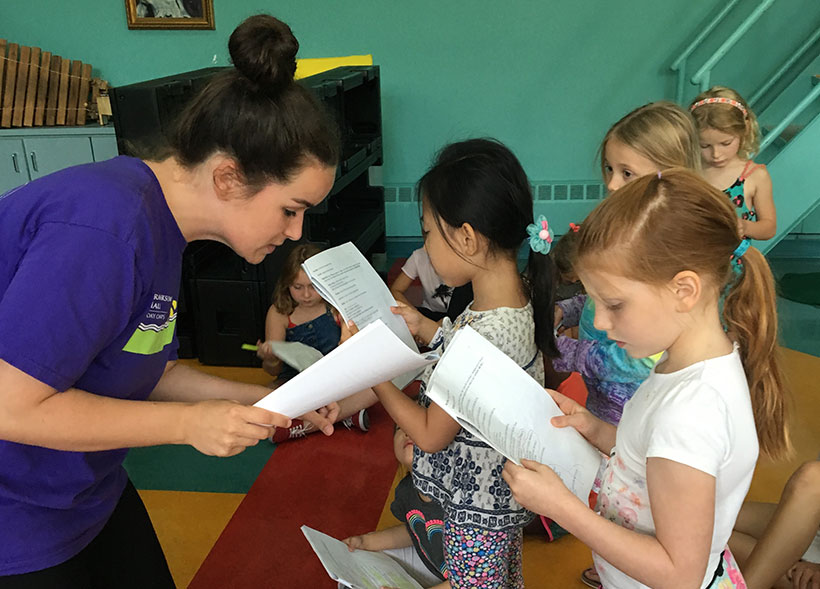
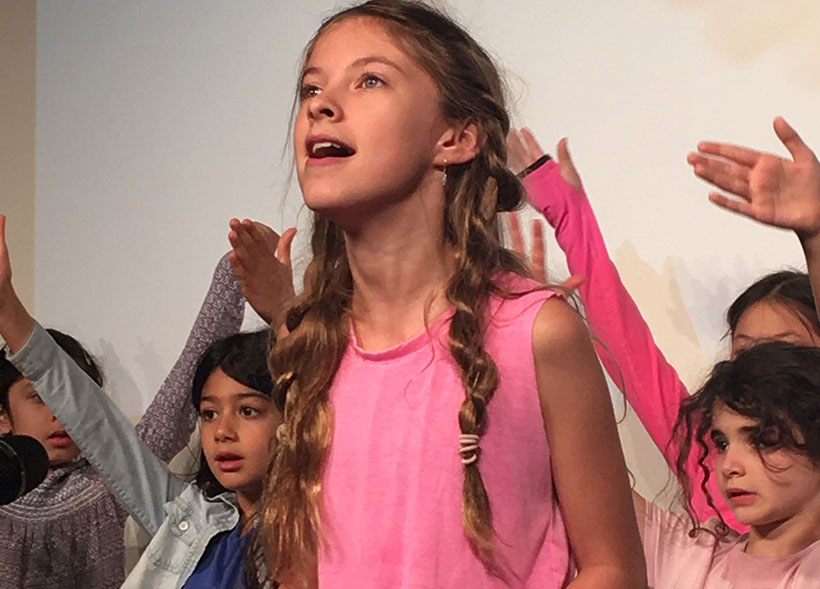
- Actor Voice warm up – focus on stretching vocal range. We used bubble gum as an image. We learned about placement of sound using our diaphragm for support. As well as where in the face sound is placed.
- Sour face sweet face – stretching face muscles, articulation of face. Actors use their bodies as an instrument and you have to be in control of your face muscles. As well, the face is full of muscles that also need to be stretched. For sour face you squeeze face tight. For sweet face open it wide.
- Body roles/shaking – flexibility, warm up, waking up the back which holds your body support
- Yes Lets – This game is about taking direction and making it their own. As actors we need to be able to take direction from a director and interpret this information to create our roles. This game also explores the skills of active listening, creative interpretation and being open to all ideas.
- Wall of Fame – Awards Presented:
Students achieve awards each day in many areas such as Leadership, Risk Tking, Courage, Positive Outlook, Kindness etc - Tableau/ Storytelling: This game helps the students build creativity and work as a team. We establish various groups with images (washing machine, house etc.) Laurel told a story and when she got to the image, the campers had to find their group and recreate the image. This game also highlights the power of a story and how important all details and all characters are.
- Choreography of 3 songs – Looking at detail in hands, feet and expression.
- We highlight parts so that campers could understand they say their lines, they have a singing solo AND they are in ALL songs that say ALL
- Masque design – we started to build upward the facial features. We taught the campers about different genres of film and different types of characters with in those genres. They were to choose film genre – zombies or monsters, Comedy – lovers, friends, Animation – animals, bigger than life. We talked about the different features and how it can communicate a certain emotion to an audience. An angled eye brow could represent anger for example.
DAY 3
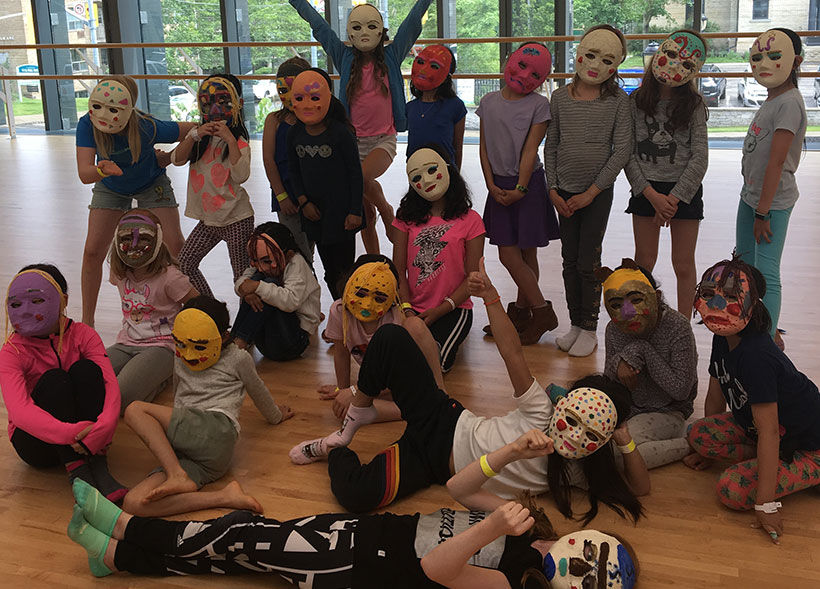
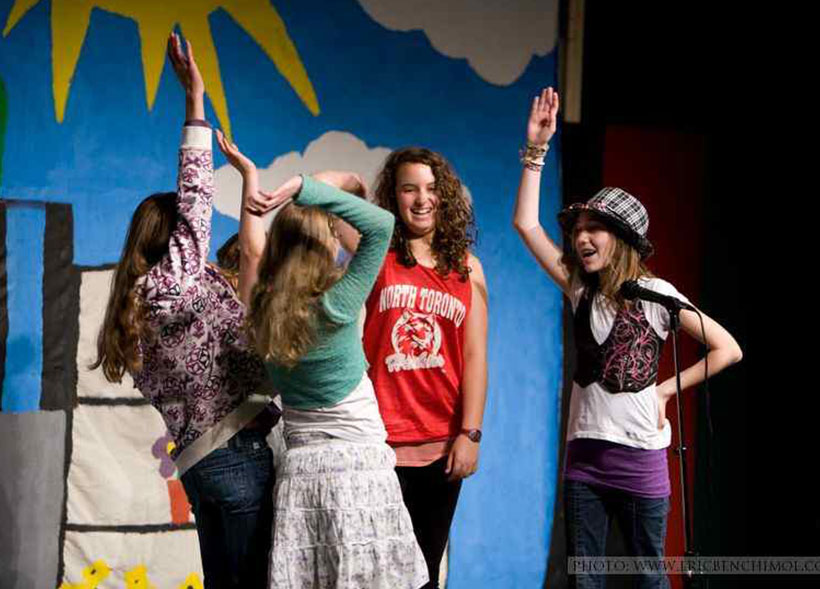
- Darling Please Smile – This is a crowd favourite. Campers have to create strategies or ‘tactics’ in order to make another camper smile. The skills here are concentration, making bold choices and identifying the ‘tactic’ As actors when we analyse a scene, you have to identify what “tactic” your character uses to get what they want. For example, if you want someone to stay, the tactic might be to get on your knees and beg.
- Design of mask on paper – the process in the arts is very important. A choreographer or an actor or a director doesn’t just come to work with out preparation. This exercise is to teach the importance of a process.
- Mixing Colour Tutorial – primary colours/black/white
- Painting our mask the base colour
DAY 4
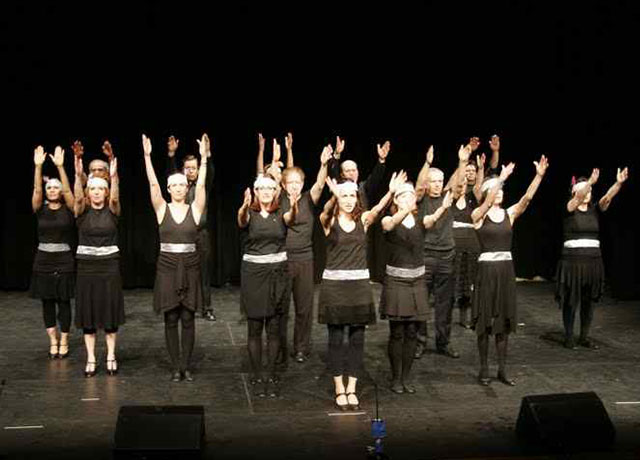
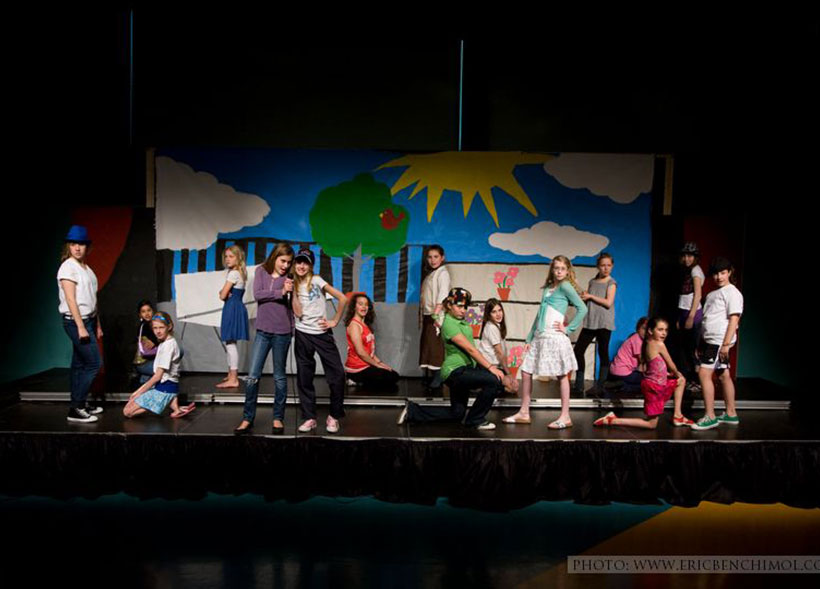
- Warm up game: Walk / Stop / Jump/Clap/Up Down – This game works on memorization, relation of text with action, focus and concentration.
- Secret Action: This game focuses on listening, following direction, concentration
- Spoke about what a THEME of a show is. All the clues that make up the message of a show. Power of storytelling and the message it leaves an audience. We had a discussion about diversity. That being different is ok and welcomed. We also spoke about although we are all different we have so many similarities. Diversity is beautiful and we honour everyone for their uniqueness. We spoke about how Rizzo might have a bad attitude in the show but it supports the message for us to learn that this behavior isn’t nice and we need to treat others with respect. Also there is a message about Embracing Change. In life we will have to grow and develop in different ways and change will happen and learning how to embrace this is a great life skill.
- We learned 3 Choreographies – Focusing on Acting through the dance
- Prop/Set Design Exploration with Ryan: We explained what set design was for a show. Campers made suggestions for how to make the Grease Car look broken and how to make it look good. He tool notes and will add their ideas into his design.
- Worked on 3 lines. Partners worked together to help memorize. We looked at different strategies like reading the line out loud and then trying it with out looking and partner saying the cue line and responding. The next level was identifying the Intention of the line/Emotion.
AFTERNOON


- Where – Campers one at a time enter the space and develop the “Where” (Place they are at) by doing actions and recreating the space. Each camper guesses where they are and when they are right enter the scene. This helps with Improvisation skills, listening to other, working on not blocking ideas of others, moving a story forward,
- Archetype Crossing – Archetypes such as Hero/Villian/Old/Young etc, Campers embody this character and develop a walk and get a snack to represent the character. This is the start of the process of “outside-inside” technique. This will help with our masks. 5 students are given the same archetype … each child does it differently which shows us, each acting choice and interpretation is valued.
- The Most Boring Scene in the World: In this activity we are teaching about the Who are you” the “Where are you” the “What is happening” (The Given Circumstances as “Stanislavski called it) and it also teaches about Improvisation, moment before and storytelling. It has a beginning, middle and end. Here is the scene. Each scene would be different based on these different circumstances even though the lines are the same.Person 1: Let’s go inside (Objective)
Person 2: That’s amazing (Obstacle)
Person 3: Let’s get out of here (resoulution) - Masque Building – We added paint detail to our mask
- Blocking Notation – We taught campers how to write down the “blocking” This term refers to where the actors move in a scene. This type of notation is what professional actors use to understand what the director has told them in a rehearsal.
- We spoke about Cue lines and Strategies:
Read the line
Cover the line and say it out loud
See if you are right
Look at the cue line (line before) and see what words in that line trigger you to say your next line
Think of the intention in your line. Ask yourself, why do you say it?
If you can’t relate to the line as yourself, “What if” this happened to you? How would you feel and start the feeling from there. This is how actors build their characters from the inside out. When we do our mask workshop we will look at a different approach (from the outside inside)
DAY 5
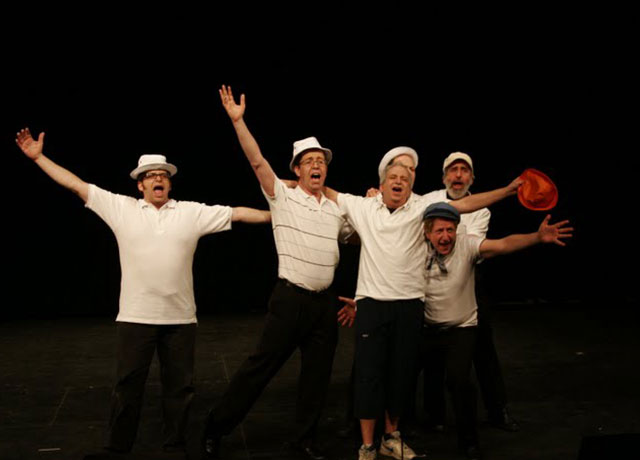
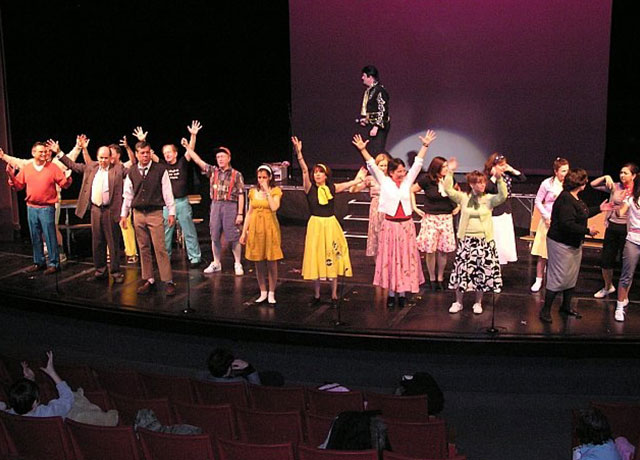
Mask Workshop in the Dance Studio:
Rules of Mask Work:
- Turn away from the audience to put the mask on
- Don’t play with hair or mask
- Don’t touch the mask during the performance…it’s a character and has a soul
- RESPECT the mask, treat it as if it were an actual face (there is great power and potential in a mask)
- Never speak in a mask using your normal voice
FREE PLAY:
- Why do you think masks were used in early performances? (It conceals the actor but forces a revelation of character through other means such as physicality. With sizes of theatres back then, it was hard to see the performers from far away so having these big physical characters would allow everyone to follow the story)
- Have them sit in a circle with their masks in front of them. Feel the shape of the mask. Touch every angle/curve (With touching the mask, we are imprinting the mask into our visual and muscle memory)
- Next have them go to the mirror. Turn away from the mirror. Put on the mask on and look in the mirror. Start with simple movements. Neck and head. How does your character move their neck and head?
FINDING THE BODY:
- How does your character sit and stand?
- How does your character walk around the space?
- From what point in the body does your character initiate movement?
- What is the weight of this character? Heavy/Light?
- What is the tempo of this character movement? Quick/Slow?
- What is the rhythm? (3/4 time?)
- What physical ticks or mannerisms does this character have? Do they move their hands or feet in a certain way? Do they have a repetitive gesture like checking a watch?
FINDING THE VOICE:
- Start with simple vocalizations. What does this character sound like when they’re laughing, thinking, surprised, startled, impatient?
- How fast/slow does your character talk?
- Where is the pitch of their voice?
- Do they stutter or lisp?
- Do they speak another language or have a different accent?
- Do they have a signature word or catchphrase that they use often?
LIVING BIOGRAPHY:
- Have them look at their masks again and describe the character. What clothes does this character wear? What’s this character’s posture? What’s the expression on the mask? What environment is this character from?
- Have them explore the following using physicality:
- Where are we right now?
- What was your favourite memory from childhood?
- Who do you love most in the world?
- What is your greatest hope?
- What do you dream about?
GAMES:
- IS THERE MORE? Bring a few objects. How would each character use the objects? See how many different ways the objects can be used.
- ENTRANCES/EXITS: Before an entrance, the character must knock. The rest of the class responds with, “Who is it?” The performer comes into the space. Have the character showcase their physicality. Feel free to ask them questions: How did you get here today? What do you like to eat? Do you have parents? Or you can incorporate the object again. How does this character use the object?
Finish Blocking from page 16-END:
RUN SHOW – Detailed, descriptive feedback for each child.

